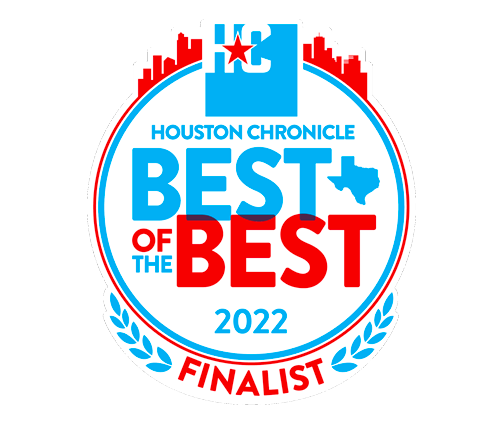Introduction: Why Portion Control Matters
Feeding your adult dog the right amount of food is one of the most important steps in keeping them healthy and happy. Too little food can lead to nutritional deficiencies, while too much can cause obesity, joint problems, and other health issues. Understanding how much to feed your dog depends on several factors including breed, size, age, and activity level. In this guide, we’ll break down everything you need to know about portion control and feeding your furry friend the right way.
Factors That Affect How Much to Feed Your Dog
Every dog is unique, which means there’s no one-size-fits-all feeding plan. To determine how much food your adult dog needs, consider the following factors:
1. Dog’s Weight and Size
- Small breeds (under 20 lbs): ½ – 1½ cups of dry food per day
- Medium breeds (20–50 lbs): 1½ – 2½ cups per day
- Large breeds (50–100 lbs): 2½ – 4½ cups per day
- Giant breeds (100+ lbs): 4–6 cups or more per day
Always check your food’s calorie content, since different brands have different calorie densities.
2. Activity Level
- Active dogs (working breeds, daily walkers): need more calories for energy.
- Sedentary dogs (mostly indoors): need fewer calories to prevent weight gain.
3. Age
Adult dogs between 1–7 years typically need maintenance calories, while senior dogs (7+ years) may require fewer calories but more fiber and joint support nutrients.
4. Breed and Metabolism
Some breeds like Labradors and Beagles are more prone to weight gain, while others like Greyhounds have naturally higher metabolisms.
How Often Should You Feed Your Adult Dog?
Most adult dogs thrive on two meals per day — one in the morning and one in the evening.
This routine helps:
- Maintain steady energy levels
- Prevent overeating
- Support better digestion
Avoid feeding your dog once a day, as large single meals can cause bloating, discomfort, or gastric torsion (especially in deep-chested breeds).
Understanding Dog Food Labels
Reading your dog food’s label is essential for portion control. Look for:
- Calorie content per cup (kcal/cup)
- Feeding guidelines (usually printed on the bag)
- Ingredients list – Whole meats and vegetables should be among the first ingredients
- AAFCO Statement – This ensures the food meets the nutritional standards for adult dogs
Example:
If your dog’s food has 350 kcal per cup, and your dog needs 700 kcal per day, feed about 2 cups daily, divided into two meals.
How to Tell If You’re Feeding the Right Amount
Here’s how to check if your dog’s portion size is correct:
Healthy Signs:
- Ribs are easily felt but not visible
- Waistline is slightly visible when viewed from above
- Energy levels are consistent
- Stool is firm and regular
Warning Signs of Overfeeding:
- Weight gain or bloated appearance
- Lethargy or reluctance to exercise
- Soft stools or digestive issues
Warning Signs of Underfeeding:
- Visible ribs and spine
- Low energy or fatigue
- Dull coat or shedding
If you’re unsure, schedule a body condition assessment with your vet — they can calculate your dog’s ideal weight and feeding plan.
Portion Control Tips for a Healthy Dog
- Use a Measuring Cup:
Don’t eyeball portions. Always measure food with a standard cup or digital scale. - Stick to a Feeding Schedule:
Feed at the same times daily to help digestion and behavior consistency. - Limit Treats:
Treats should make up no more than 10% of daily calories. Choose healthy options like carrots or apple slices. - Monitor Weight Monthly:
Adjust portions if your dog gains or loses weight unexpectedly. - Avoid Free-Feeding:
Leaving food out all day encourages overeating. Offer meals and remove leftovers after 15–20 minutes.
Adjusting Portions Based on Lifestyle Changes
Your dog’s needs can change over time. Increase or decrease portions when:
- They become more or less active
- You switch food brands
- They’re spayed/neutered (which can affect metabolism)
- Your vet recommends weight management
Always make changes gradually over 5–7 days to avoid stomach upset.
When in Doubt, Ask Your Vet
While feeding guides are a great starting point, your veterinarian can help you fine-tune your dog’s diet based on breed, weight, and health status. They may recommend specialized diets for allergies, sensitive stomachs, or weight loss.
Final Thoughts
Feeding your adult dog the right amount of food is more than just filling their bowl — it’s about ensuring a lifetime of health, energy, and happiness.
By paying attention to portion sizes, activity level, and food quality, you can help your dog maintain a perfect balance and thrive for years to come.
Frequently Asked Questions (FAQs)
1. How many times a day should I feed my adult dog?
Most adult dogs do best with two meals per day once in the morning and once in the evening. This helps maintain steady energy levels, supports digestion, and prevents overeating.
2. How do I know if I’m feeding my dog the right amount?
You’re likely feeding the right amount if your dog has a visible waist, you can feel (but not see) their ribs, and their energy and stool quality are normal.
If your dog seems lethargic or is gaining weight, adjust portion sizes slightly and monitor results.
3. Can I feed my dog once a day?
It’s not recommended for most adult dogs. Feeding once daily can lead to bloating or digestive discomfort, especially in large breeds. Split meals into two smaller servings for better digestion and energy balance.
4. Should I follow the feeding chart on the dog food bag?
Yes, but treat it as a starting point. Every dog’s metabolism and activity level are different, so you may need to adjust portions slightly up or down.
Always monitor your dog’s body condition and weight over time.
5. What are the best healthy treats for portion control?
Great low-calorie treats include carrots, cucumber slices, apple pieces (without seeds), or freeze-dried meat snacks. Remember, treats should make up no more than 10% of your dog’s daily calories.

